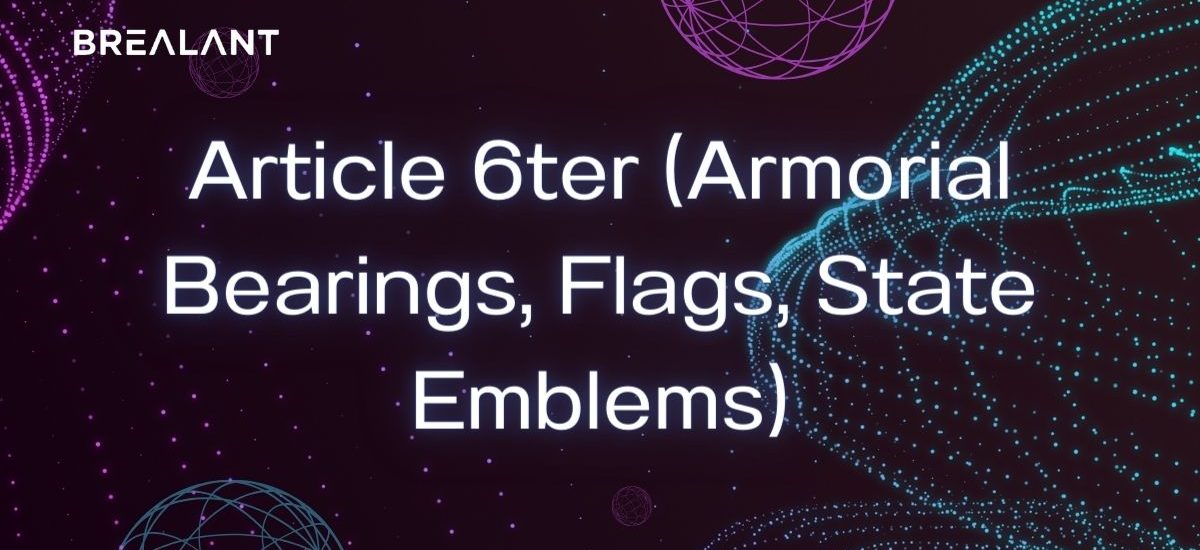The World Intellectual Property Organization (WIPO) plays a crucial role in establishing and enforcing international treaties and agreements related to intellectual property rights. Among these, Article 6ter of the Paris Convention for the Protection of Industrial Property is a significant provision that addresses the protection of certain state-related symbols, namely, armorial bearings, flags, and state emblems. In this blog, we will delve into Article 6ter, its significance, and the role of WIPO in safeguarding these sovereign symbols.
Understanding Article 6ter
Article 6ter is a provision within the Paris Convention for the Protection of Industrial Property, an international treaty established in 1883 and administered by WIPO. The Paris Convention sets out a framework for the protection of industrial property, including patents, trademarks, and industrial designs. Article 6ter, however, focuses specifically on protecting certain state-related symbols.
Article 6ter states that “armorial bearings, flags, and other state emblems of the states of the Union or of international intergovernmental organizations” are exempt from trademark registration and protection. In simpler terms, this means that symbols representing the sovereignty and authority of states or international organizations cannot be used as trademarks in a way that suggests endorsement or official approval by the respective state or organization.
The Significance of Article 6ter
- Preserving Sovereign Symbols: Article 6ter is fundamentally about respecting the sovereignty and authority of states and international organizations. It ensures that their official symbols are not used for commercial purposes without permission, thus preserving their dignity and integrity.
- Preventing Misuse: By exempting these symbols from trademark protection, Article 6ter prevents the unauthorized commercial use or exploitation of these symbols. This helps avoid potential confusion and misuse that could harm the reputation of states and international organizations.
- Fostering Respect: The provision promotes mutual respect among nations and international organizations. It underscores the principle that these symbols should be treated with honor and dignity, regardless of political or economic interests.
WIPO’s Role in Implementing Article 6ter
WIPO actively facilitates the implementation of Article 6ter by coordinating efforts at the international level. Here’s how WIPO fulfills its role in protecting armorial bearings, flags, and state emblems:
- Promoting Awareness: WIPO raises awareness about Article 6ter among member states, trademark offices, and the public. By doing so, WIPO ensures that the provision is understood and respected on a global scale.
- Supporting Implementation: WIPO offers assistance to member states in implementing Article 6ter within their national trademark registration systems. This support includes providing guidelines and best practices for compliance.
- Monitoring and Reporting: WIPO oversees the correct application of Article 6ter by trademark offices. It maintains a database of protected symbols and regularly publishes reports to update the public on the latest developments.
- Handling Disputes: When disputes arise over the use of armorial bearings, flags, or state emblems in trademarks, WIPO may assist in the resolution of these conflicts, helping to maintain the integrity of these symbols.
Protected Symbols under Article 6ter
Article 6ter protects a range of state-related symbols, including:
- Armorial Bearings: These are often elaborate designs associated with a country, region, or historical entity. They may include coats of arms, crests, and other heraldic symbols.
- Flags: National flags, as the most recognizable symbols of statehood, are given particular protection to prevent misuse or exploitation.
- State Emblems: State emblems encompass official symbols used to represent the authority and sovereignty of a nation, such as official seals and emblems.
- International Organization Emblems: Article 6ter also extends protection to emblems of international intergovernmental organizations, recognizing their importance and status in the global community.
Misuse and Exceptions
While Article 6ter is clear in its intent to prevent misuse of these symbols, there are exceptions. The provision acknowledges that states or organizations may choose to allow the use of their symbols as trademarks in certain situations. However, such use must be authorized and not likely to mislead the public or suggest an official endorsement.
States and organizations may grant permission for the use of their symbols as trademarks for specific products or services, but these exceptions are subject to their regulations and oversight.
International Consistency
The strength of Article 6ter lies in its international consistency. Establishing a framework for the protection of armorial bearings, flags, and state emblems it ensures that these symbols receive uniform treatment in various countries. This consistency is especially valuable in a globalized world where products and services can easily cross borders.
A Testament to International Cooperation
Article 6ter is a testament to international cooperation in the realm of intellectual property protection. It upholds the principles of mutual respect and cooperation among states and international organizations, fostering understanding and solidarity in the global community.
WIPO’s active role in promoting and implementing Article 6ter underscores its commitment to ensuring that the symbols of sovereignty and authority are treated with the utmost respect and integrity on a global scale.
Conclusion
Article 6ter of the Paris Convention stands as a crucial provision that upholds the dignity and integrity of armorial bearings, flags, and state emblems. It prevents their unauthorized commercial use and exploitation while promoting international cooperation and respect among nations and international organizations.
WIPO’s role in implementing and promoting Article 6ter ensures that these sovereign symbols are protected and treated with the honor and respect they deserve. In a world of ever-increasing globalization, the preservation of these symbols remains a vital aspect of international intellectual property law.










